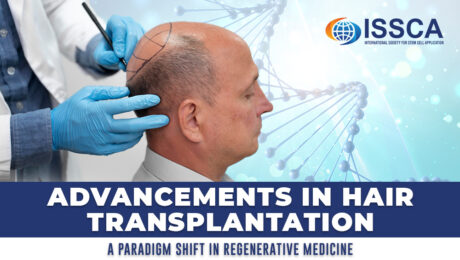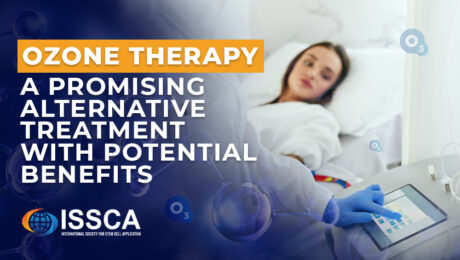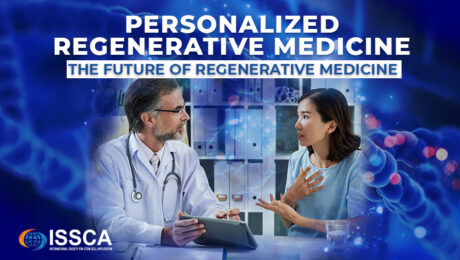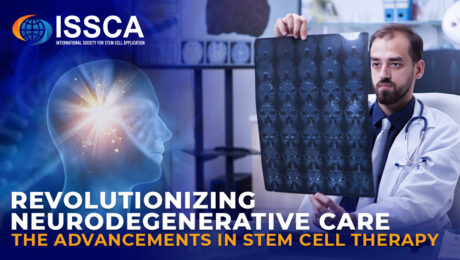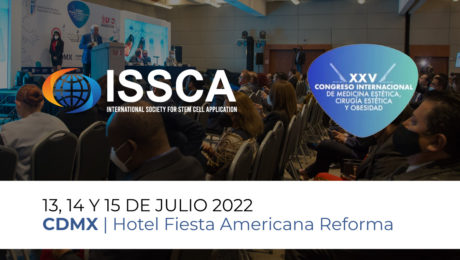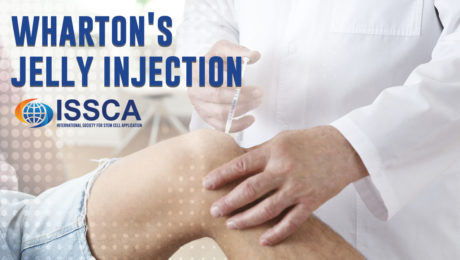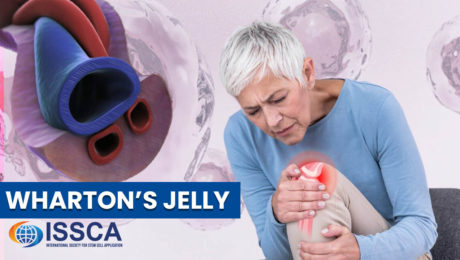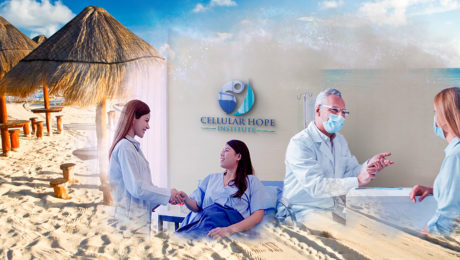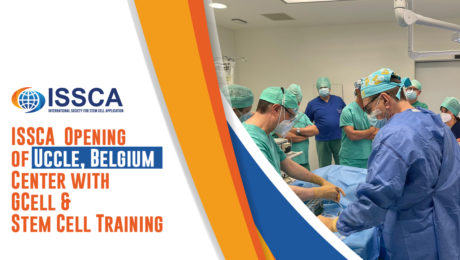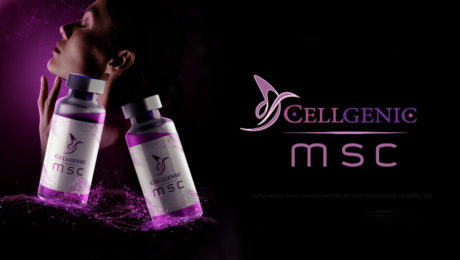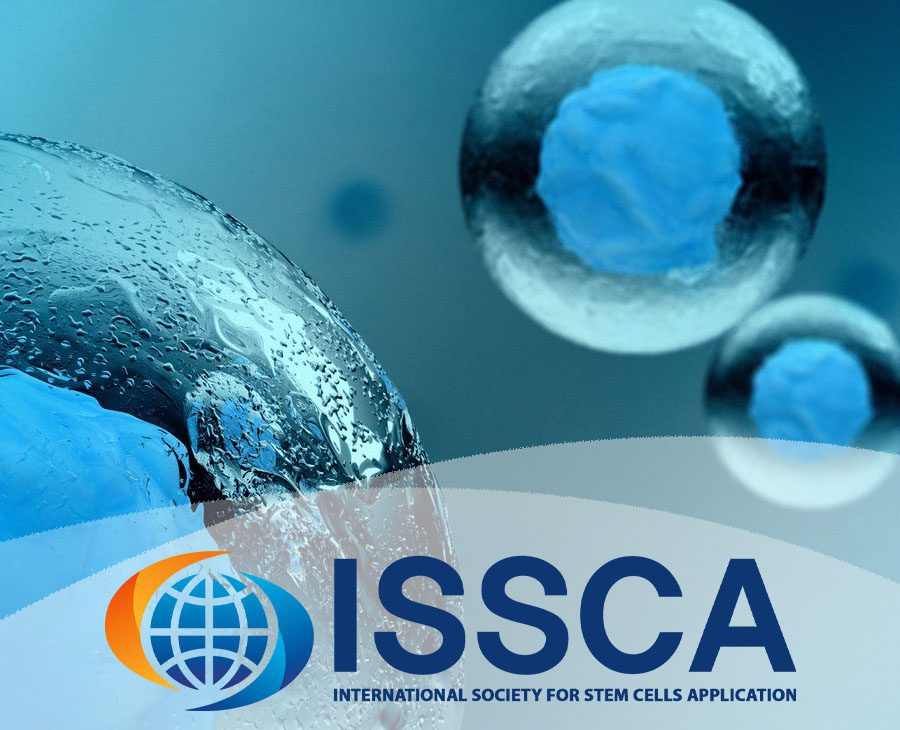Advancements in Hair Transplantation: A Paradigm Shift in Regenerative Medicine
WEDNESDAY, 09 AUGUST 2023 / PUBLISHED IN BLOG
In the realm of regenerative medicine, hair transplantation has experienced remarkable progress in recent years. As part of a multidisciplinary community of physicians and scientists dedicated to advancing the field, it is essential to stay informed about the latest developments in this area. This blog post aims to provide a comprehensive overview of the cutting-edge advancements in hair transplantation, highlighting the convergence of science, technology, and practice.
Tissue Engineering in Hair Transplantation
The integration of tissue engineering principles into hair transplantation has opened new avenues for regenerative medicine. Scientists are actively exploring the use of biomaterials, growth factors, and scaffolds to create an optimal environment for transplanted hair follicles. By nurturing follicular cells, tissue engineering techniques hold immense potential in enhancing transplantation outcomes and promoting tissue regeneration.
Stem Cell-Based Approaches
Stem cell therapy has emerged as a promising strategy within the realm of hair transplantation. Researchers are investigating the utilization of mesenchymal stem cells (MSCs) and adipose-derived stem cells (ADSCs) to stimulate hair follicle regeneration. These unique regenerative cells promote hair growth and significantly enhance the success rate of transplantation procedures. Ongoing research in stem cell-based therapies continues to unveil their potential to revolutionize hair restoration techniques.
Gene Therapy for Hair Loss
Gene therapy is gaining traction as a cutting-edge approach to addressing hair loss at its core. Scientists aim to develop innovative treatments for both genetic and acquired forms of hair loss by manipulating genes involved in hair growth and regulation. Techniques such as CRISPR-Cas9 gene editing hold immense potential for altering gene expression associated with hair follicle development, offering personalized regenerative therapies.
Nanotechnology in Hair Transplantation
Nanotechnology has paved the way for groundbreaking advancements in hair transplantation. Researchers are exploring the application of nanomaterials and nanoparticles to enhance the targeted delivery of growth factors, drugs, and stem cells directly to the hair follicles. This precise and controlled release optimizes the regenerative potential of transplanted hair follicles, leading to improved treatment outcomes and faster healing.
Artificial Intelligence (AI) and Machine Learning
The integration of AI and machine learning algorithms has transformed various medical fields, including hair transplantation. AI-powered technologies assist in precise hair follicle extraction, optimizing graft placement, and predicting post-transplant outcomes. By analyzing vast datasets and patterns, AI algorithms enhance decision-making, improve surgical techniques, and contribute to personalized treatment plans in hair transplantation.
As active contributors to the advancement of regenerative medicine, staying informed about the latest developments in hair transplantation is crucial. Tissue engineering, stem cell-based approaches, gene therapy, nanotechnology, and the integration of AI and machine learning are reshaping the landscape of hair restoration. By remaining at the forefront of these advancements, physicians and scientists can harness the power of regenerative medicine to effectively treat hair loss and alleviate human suffering.
Join us at issca.us and let us continue to collaborate, innovate, and explore the limitless potential of regenerative therapies.
- Published in Blog
Ozone Therapy: A Promising Alternative Treatment with Potential Benefits
MONDAY, 24 APRIL 2023 / PUBLISHED IN BLOG
Ozone therapy is a promising alternative medical treatment that has gained popularity in recent years. It involves the administration of ozone, a form of oxygen, to treat various medical conditions, ranging from chronic pain to infections. Although the scientific evidence on the effectiveness of ozone therapy remains limited, many people claim to have experienced significant health benefits from this alternative treatment. In this article, we’ll explore the potential benefits and risks of ozone therapy, as well as the latest research on this alternative medical treatment.
What is Ozone Therapy?
Ozone therapy is a safe, non-invasive, and effective alternative medical treatment that has been used for over a century. It involves the administration of ozone, a gas made up of three oxygen atoms, to the body in various forms, such as injections, insufflations, or topical applications. Ozone is a powerful oxidant that can damage cells and tissues, which can have positive or negative effects, depending on the form and amount of ozone used.
One of the key benefits of ozone therapy is its ability to improve blood circulation and oxygen delivery to the tissues, which can help reduce inflammation, support wound healing, and boost immune function. Additionally, ozone therapy is believed to have antimicrobial and antiviral properties, which may help fight infections caused by bacteria, viruses, and fungi.
Potential Benefits of Ozone Therapy
Ozone therapy has been used to treat a wide range of medical conditions, including:
- Chronic Pain: Ozone therapy may help reduce pain and inflammation in conditions such as osteoarthritis, herniated discs, and fibromyalgia.
- Infections: Ozone therapy may help fight infections caused by bacteria, viruses, and fungi, including Lyme disease, hepatitis, and HIV.
- Autoimmune Diseases: Ozone therapy may help reduce inflammation and improve immune function in conditions such as multiple sclerosis, rheumatoid arthritis, and lupus.
- Skin Conditions: Ozone therapy may help treat various skin conditions, including eczema, psoriasis, and acne, by improving blood circulation and oxygenation.
Moreover, ozone therapy is a safe and non-invasive treatment that doesn’t have the side effects commonly associated with traditional medical treatments. It’s also relatively inexpensive and can be administered in a variety of settings, including clinics, hospitals, and private practices.
Latest Research on Ozone Therapy
Although the scientific evidence on the effectiveness and safety of ozone therapy remains limited, some recent studies have suggested that ozone therapy may have potential health benefits in certain conditions.
- Immunomodulatory Properties: A study published in the Cuban journal of immunology describes the immunomodulatory properties of ozone therapy by characterizing the biological effects of ozone on immune system cells, soluble mediators, and other cell types.
- Pain Management: A 2022 review on ozone therapy in pain medicine highlights the high safety of pain treatments with ozone therapy, especially modern medical ozone generators with great precision.
- Diabetic Pain Relief: A 2020 study on systemic ozone therapy in insulin-dependent diabetic patients found that the analgesic and anti-inflammatory properties of ozone make it one of the most efficient therapeutic tools for controlling chronic pain in insulin-dependent diabetic patients.
Conclusion
Ozone therapy is a promising alternative medical treatment that has been used to treat various medical conditions. Many people claim to have experienced significant health benefits from this alternative treatment. Furthermore, ozone therapy is a safe and non-invasive treatment that doesn’t have the side effects commonly associated with traditional medical treatments.
If you’re interested in ozone therapy, make sure to do your research, ask questions, and consider this alternative medical treatment as a potential option for your health concerns. It’s important to stay informed about the latest developments in stem cell therapy. You can learn more about regenerative medicine and stem cells by enrolling in our international certification program at www.issca.us.
- Published in Blog
Personalized Regenerative Medicine: The Future of Regenerative Medicine
MONDAY, 17 APRIL 2023 / PUBLISHED IN BLOG
Regenerative medicine is a rapidly growing field that focuses on repairing or replacing damaged or diseased tissues and organs using stem cells, growth factors, and other advanced therapies. The effectiveness of this approach has been demonstrated in treating a wide range of conditions, including heart disease, diabetes, joint pain, and neurological disorders. One of the major challenges of regenerative medicine, however, is that not every patient responds to the same treatment. This is where personalized regenerative medicine comes into play.
What is Personalized Regenerative Medicine?
Personalized regenerative medicine involves tailoring treatments to meet the unique needs of each patient based on their genetic profile, lifestyle, and medical history. This approach recognizes that no two patients are the same and that a one-size-fits-all approach to regenerative medicine is not always effective.
As part of personalized regenerative medicine, advanced technologies such as genomics, proteomics, and metabolomics are used to analyze a patient’s unique biological profile. Regenerative medicine centers utilize this information to develop personalized treatment plans tailored to their individual needs and conditions, ranging from stem cell therapy to gene therapy.
Why is Personalized Regenerative Medicine the Future of Regenerative Medicine?
There are several reasons why personalized regenerative medicine is the future of regenerative medicine:
More Effective Treatments
By tailoring treatments to individual patients, personalized regenerative medicine has the potential to be much more effective than traditional one-size-fits-all approaches.
Improved Patient Outcomes
Because personalized regenerative medicine takes into account the unique needs and conditions of each patient, it has the potential to improve patient outcomes and reduce the risk of complications.
Lower Healthcare Costs
By providing more effective treatments and reducing the risk of complications, personalized regenerative medicine has the potential to lower healthcare costs in the long run.
Better Understanding of Disease
Personalized regenerative medicine involves analyzing a patient’s unique biological profile, which can help researchers and healthcare providers better understand the underlying mechanisms of disease.
Advancements in Technology
As technology continues to advance, personalized regenerative medicine will become even more precise and effective, leading to even better patient outcomes.
Conclusion
The concept of personalized regenerative medicine is an exciting new approach to regenerative medicine that has the potential to revolutionize the healthcare industry. Individualized regenerative medicine has the potential to be more effective, improve patient outcomes, lower healthcare costs, and provide better understanding of disease by tailoring treatments to the individual patient. As technology continues to advance, we can expect to see even more exciting developments in this field in the years to come.
You can learn more about regenerative medicine and stem cells by enrolling in our international certification program at www.issca.us.
- Published in Blog
Revolutionizing Neurodegenerative Care: The Advancements in Stem Cell Therapy
MONDAY, 13 MARCH 2023 / PUBLISHED IN BLOG
Neurodegenerative diseases, including Alzheimer’s disease, Parkinson’s disease, Huntington’s disease, and amyotrophic lateral sclerosis, are a group of incurable neurological disorders characterized by the chronic progressive loss of different neuronal subtypes. The conditions are debilitating and affect millions of people worldwide. Despite its increasing prevalence among the ever-increasing aging population, little progress has been made in the coincident immense efforts towards development of therapeutic agents. However, recent advancements in stem cell therapy, including stem cell-derived exosomes, neurotrophic factors (NTFs), and their combination, show promise as potential therapeutic agents in neurodegenerative diseases.
The Promise of Stem Cell Therapy
In recent years, stem cells have emerged as one of the most active research therapeutic tools for many diseases. Stem cells are undifferentiated cells that have the ability to develop into pluripotent stem cells and adult stem cells. All stem cells have the potential for continuous self-renewal, high proliferation, and multidirectional differentiation into various cell types to replace degenerated or dead cells. In the context of neurodegenerative diseases, stem cells can be used to replace lost or damaged neurons, provide neuroprotection, and promote neural repair. These properties make stem cells an attractive option for treating neurodegenerative diseases, as they have the potential to slow or even reverse the progression of these conditions.
Advantages of Stem Cell Therapy
One of the key benefits of stem cell therapy for neurodegenerative diseases is that it offers a non-invasive, minimally-invasive, and non-toxic alternative to traditional treatments. Unlike drugs and surgery, stem cell therapy does not produce adverse side effects and can be administered in a safe and controlled manner. In clinical trials, stem cell therapy has been shown to be effective in reducing symptoms and improving quality of life for patients with neurodegenerative diseases.
Alzheimer’s Disease (AD)
Alzheimer’s disease (AD) is a progressive neurodegenerative disease and the most common form of dementia, affecting approximately 55 million people worldwide. Cognitive impairment is a hallmark of AD. Currently, drug therapies can only delay symptoms, but not relieve disease pathology or progression. Researchers have demonstrated that neurons derived from stem cells can integrate with existing neural networks and repair damaged neurons within the host brain, improving learning and memory deficits. NTFs can improve AD symptoms and provide neuroprotective effects.
Parkinson’s Disease (PD)
The second most common neurodegenerative disorder is Parkinson’s disease (PD). The motor symptoms of PD mainly include rest tremor, rigidity, bradykinesia, and postural instability, while common nonmotor symptoms include neuropsychiatric and sleep disorders as well as sensory and autonomic dysfunction. At present, there is no cure for PD or disease-modifying therapy. It is common for symptom-relief medications to only provide partial relief and elicit side effects such as motor complications, gastrointestinal problems, and neurological issues. In spite of the fact that these treatments do not address the underlying pathology, alternative therapies, especially those based on stem cells and NTFs, are still being pursued intensively.
Huntington’s Disease (HD)
Huntington’s disease (HD) is characterized by motor, cognitive, and psychiatric dysfunctions. The study of multiple possible neurodegenerative mechanisms of HD is currently underway, and this knowledge is expected to contribute to the development of new HD treatments. The abilities of stem cells to rescue or replace the damaged and dying neurons, and to prevent further cell damage and death, make stem cell-based therapies promising for treatment of this neurodegenerative disease.
Amyotrophic Lateral Sclerosis (ALS)
As a neurodegenerative disorder, amyotrophic lateral sclerosis (ALS) involves progressive degeneration of both upper and lower motor
neurons, resulting in palsy and death within 3-5 years of onset. Currently, only two disease-modifying medicines are available, each showing benefit to a limited number of patients. Stem cell-based therapy holds great promise for treating ALS by providing both cell replacement and NTF delivery to target the multiple pathologies. Stem cells available for ALS treatment include NSCs, MSCs, embryonic stem cells, induced pluripotent stem cells, and olfactory ensheathing stem cells.
The Future of Stem Cell Therapy in Neurodegenerative Diseases
While stem cell therapy is still in the early stages of development, it holds enormous promise as a future treatment for neurodegenerative diseases. A number of studies have demonstrated that stem cells and NTFs offer considerable therapeutic potential, especially when they are used together. In addition to replenishing target neurons, stem cells combined with NTFs can produce neurotrophins to improve the microenvironment that promotes nerve repair and regeneration. As research continues, we can expect to see even more exciting advancements in this field, bringing hope to those affected by these debilitating conditions.
Conclusion
Stem cell therapy represents a revolutionary approach to treating neurodegenerative diseases, offering a non-toxic, minimally-invasive alternative to traditional treatments. With ongoing research and development, the potential to improve patient outcomes and quality of life is immense. It’s important to stay informed about the latest developments in stem cell therapy. You can learn more about regenerative medicine and stem cells by enrolling in our international certification program at www.issca.us.
- Published in Blog
ISSCA Members to Present in the XXV Congreso Internacional de Medicina, Cirugia Estética y Obesidad
The XXV Congreso Internacional de Medicina, Cirugia Estética y Obesidad will take place in CDMX, México on July 13,14 and 15, 2022. The International Society for Stem Cell Application (ISSCA) will be actively taking part in the congress. The ISSCA is a multidisciplinary community of physicians and scientists with a mission to advance the science, technology, and practice of regenerative medicine to treat diseases and lessen human suffering through science, technology, and regenerative medicine. Several ISSCA members will be presenting or giving demonstrations on the latest protocols and technologies in regenerative medicine.
- Benito Novas, the managing director of the ISSCA from the USA, will give a talk about Digital Marketing in Cash-Based Practices. Benito Novas is a global entrepreneur, manager, and keynote speaker, who specializes in marketing focused on biotechnology, life sciences, and healthcare development. He has served as the director of the ISSCA since 2016. His published books in Aesthetic Practice and Digital Marketing can be found here. In his presentation this July, he will share his visionary approach to healthcare management and regenerative medicine. Congress attendees will have the opportunity to learn why doctors must use digital marketing strategies to grow a successful practice. Benito Novas will provide tips to attendees on how to capitalize on social media trends to grow practice influence.
- Dr. Maritza Novas, the ISSCA director of education from the USA, will talk about Allogeneic Therapies and Stromal Cell Exosomes. The use of allogeneic therapy is one of the most attractive alternatives to autologous products and is of utmost interest to researchers in recent years. Exosomes serve as mediators for cell-to-cell communication and can be used as cell-free therapeutics for their special characteristics. Dr. Maritza Novas has been in aesthetic and anti-aging medicine since 2001. She is globally recognized for her work in regenerative medicine and dedicated service in education.
- Dr. Silvina Pastrana, the Argentina chapter director of the ISSCA from Argentina, will present on Fundamentals of Cellular Therapies and Mesenchymal Stem Cells (MSC). Dr. Pastrana heads a staff of medical specialists in orthopedics, rheumatology, medical clinic, and cosmetic surgery, performing procedures that incorporate stem cell therapies. She has been serving as a staff surgeon for the Hospital Dr. Prof. Luis Güemes for 21 years.
Besides the above presentations, look forward to sessions in the practical portion of the congress, where the following ISSCA members will show the latest protocols and technologies in regenerative medicine:
- Dr. Julio Ferreira (Argentina), Cosmetic Surgery / Aesthetic Medicine
- Dr. Andrea Lapeire (Argentina), Aesthetic Medicine
- Dr. Maritza Novas (USA), ISSCA Director of Education in the USA
- Dr. Silvina Pastrana (Argentina), Chapter Director of ISSCA in Argentina
The ISSCA members are the leaders in setting standards and promoting excellence in the field of regenerative medicine, related education, certification, research, and publications. The Global Stem Cells Groups (GSCG) is a group of companies, including the ISSCA and other members, dedicated to facilitating stem cell research and medicine. Making the benefits of stem cell medicine a reality for both doctors and patients worldwide is the goal of the GSCG. To learn more, visit our sites at the ISSCA and the GSCG.
- Published in News
Wharton’s Jelly injection
MONDAY, 20 SEPTEMBER 2021 / PUBLISHED IN BLOG
What is Wharton’s Jelly?
Wharton’s Jelly is the gelatinous connective tissue found in the umbilical cord. This once discarded substance, previously thought of as afterbirth waste, is rich in healing substances and abundant in mesenchymal stem cells (MSCs).
Benefits of Mesenchymal Stem Cells from Wharton’s Jelly
The mesenchymal stem cells in Wharton’s Jelly are special because they are not readily recognized by the body’s immune system. They are considered “primitive cells,” meaning they have properties similar to embryonic cells. This reduces the risk of an immune reaction when these cells are injected into a patient.
Minimally processed Wharton’s Jelly preserves the growth factors and proteins needed for effective healing.
Who Can Benefit from Wharton’s Jelly Treatment?
Wharton’s Jelly is used in regenerative medicine, which employs naturally occurring cells and substances to promote tissue regeneration and healthy cell growth. This natural substance contains collagen, anti-inflammatory properties, growth proteins, and hyaluronic acid.
Treatment with Wharton’s Jelly can help with various ailments, including:
- Degenerative diseases
- Osteoarthritis
- Ligament and muscle damage
- Joint pain and inflammation
- Chronic pain
- Wound healing
There are no age restrictions on who can receive this treatment, and often a patient will only need treatment once.
How Does Wharton’s Jelly Treatment Work?
A specialized, minimally processed product derived from Wharton’s Jelly is injected into the injured site. While numbing is not always needed, lidocaine may be used for particularly sensitive areas. This process involves a relatively painless pinch of a needle. Once injected, the mesenchymal stem cells begin to transform into the cells needed to regenerate damaged tissue, reducing inflammation and pain, and restoring functionality.
Are There Any Side Effects to the Treatment?
No long-term risks or side effects have been reported. It is important to discuss proper protocols with your doctor before treatment.
Reasons to Undergo Cellular Therapy in Cancun, Mexico with Us
One of the main advantages of receiving cellular therapy treatment in Mexico is the ability to cultivate and reproduce, in a laboratory environment, the cells extracted from patients. This means a patient can receive a much larger concentration of cells, leading to improved results.
Additionally, Mexico is a great option for treatments that require a more invasive approach—a larger operating team, more medical products, and PPE. As one of the Western Hemisphere’s largest medical tourism capitals, treatments in Mexico are performed in hospitals that comply with FDA regulations and are offered at a more affordable price point.
While these treatments require a large investment from the patient, the cost of a multiple-day cellular therapy treatment in Mexico is far more affordable than the same treatment in the United States and Canada, especially without the ability to use culture-expanded cells.
What is the Recovery Period?
The actual injection does not require a recovery period, and most patients can return to their normal daily activities immediately. In cases of injury to ligaments or joints, rest may be required. Please follow your doctor’s advice for the best results from treatment.
Overall, Wharton’s Jelly injection treatment is minimally invasive and can help with a variety of ailments. With its limited side effects and regenerative properties, it is safe for patients of any age.
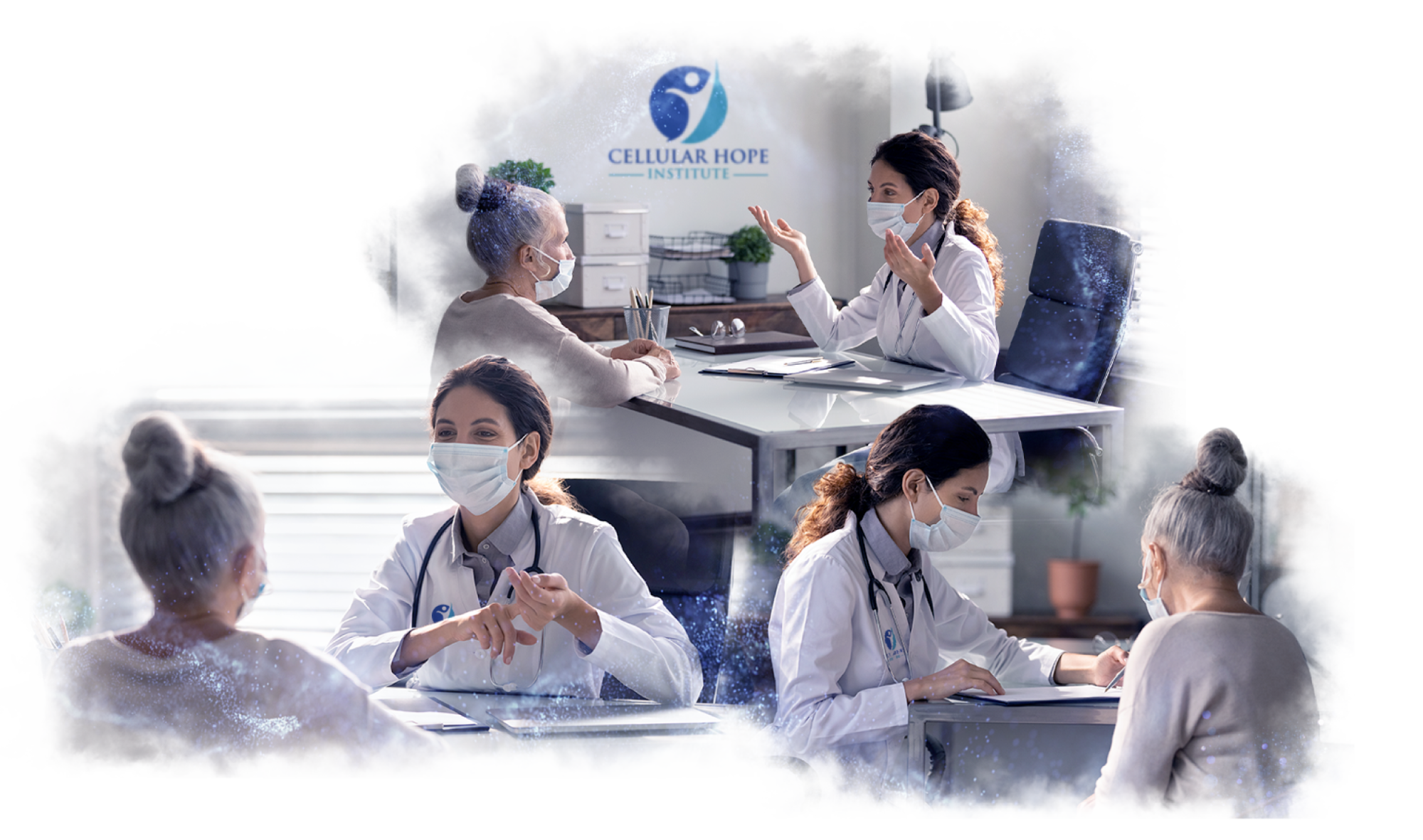
Contact Us
Talk with us to see if Wharton’s Jelly injection therapy is the right fit for you: Click here
About Cellular Hope Institute
At Cellular Hope Institute, we evaluate, diagnose, and treat patients around the world on a daily basis with the latest regenerative medicine modalities available today.
- Published in Blog
Wharton’s Jelly – how does it work?
THURSDAY, 16 SEPTEMBER 2021 / PUBLISHED IN BLOG
What is Wharton’s Jelly?
Wharton’s Jelly is the substance that helps lubricate and support the umbilical cord. What makes Wharton’s Jelly so special is it contains high levels of mesenchymal stem cells. These special stem cells adapt to fit the cells needed to help regenerate damaged tissue and relieve pain naturally.
The Potency of Mesenchymal Stem Cells in Wharton’s Jelly
The mesenchymal stem cells that come from Wharton’s Jelly are among the most potent stem cells, rich in regenerative properties. Wharton’s Jelly also contains a good amount of collagen, hyaluronic acid, and anti-inflammatory properties, making them quintessential in regenerative medicine.
The Role of Regenerative Medicine
Regenerative medicine refers to treatments and medicine that are naturally occurring, including stem cell therapies. Mesenchymal stem cells are harvested from the Wharton Jelly found in the umbilical cord, donated by a healthy mother of a full-term baby. These stem cells contain all the regenerative properties needed to help the body heal and relieve pain naturally.
How Does Wharton’s Jelly Treatment Work?
Mesenchymal stem cells are injected into the body and have the ability to transmute into cells needed to repair damaged tissue and relieve inflammation. These cells harness potent regenerative properties that help rebuild the injured part of the body and provide long-lasting natural pain relief. Unlike pain medicines, which provide temporary relief that masks the symptoms and can be harmful if taken long-term, the stem cells found in Wharton’s Jelly are naturally occurring and natural to the body.
Best Uses for Wharton’s Jelly
Wharton’s Jelly is best used in patients with degenerative diseases and musculoskeletal injuries. The anti-inflammatory and regenerative properties work to repair damaged tissues, leading to lasting pain relief and restored function.
What to Expect from Wharton’s Jelly Treatment
Once a patient and doctor have decided on this type of stem cell treatment, patients can expect a relatively painless process. Stem cells are injected into the site and immediately go to work. Injections are virtually painless, and there are no known negative side effects. Patients can generally get right back to the activities they love. Doctors will discuss treatment plans based on individual needs, and in some cases, resting an injured area for a specific period may be needed.
The Effectiveness of Wharton’s Jelly Therapy
The mesenchymal stem cells found in Wharton’s Jelly have proven to be a very successful therapeutic method to treat several degenerative issues and injuries. This therapy is relatively painless, with no known negative side effects, making it an excellent choice in treatment. Instead of masking the pain with dangerous medicine, stem cell therapy offers a naturally occurring solution that aims to repair the damaged tissue and resolve the problem.
Learn More About Wharton’s Jelly Treatment
If you want to learn more about Wharton’s Jelly Treatment and how you can help your patients, you can check our next training course here: Wharton’s Jelly Training Course.
- Published in Blog
Reasons to Choose Cellular Therapy in Mexico
TUESDAY, 10 AUGUST 2021 / PUBLISHED IN BLOG
Exosomas Celulas madre Cancun
Reasons to Choose Cellular Therapy in Mexico
What is Cellular Therapy?
Cellular Therapy, also known as regenerative medicine, is a groundbreaking field of medicine today that aims to repair diseased, dysfunctional, or injured tissues using Stem Cells and their derivative products. Stem Cells are the basic building blocks of the human body. Before cells specialize into lung cells, heart cells, or brain cells, they are stem cells. Under the right conditions in vitro or in a lab, stem cells can multiply to form more cells, known as daughter cells, which then become specialized cells in the tissue that is being treated.
Benefits of Cellular Therapy
Regenerative medicine stimulates proper healing processes within the body. Although there are various types of regenerative treatments, therapy using Mesenchymal Stem Cells is the most powerful available to physicians today. Clinical trials have proven that these cells can treat a wide array of medical conditions, especially musculoskeletal conditions. It significantly reduces long treatment times typical of standard care for lesions and other conditions and shortens rehabilitation time from years to months, offering a valuable alternative to expensive joint surgeries.
Stem Cells also have an incredible capacity to combat illness, fortifying the immune system and lowering inflammation common with autoimmune disorders. Due to the immune booster that cellular therapy offers, many clinics provide IV lines for patients looking to use stem cells to stimulate their immune system. This immune system booster can significantly enhance the quality of life for immunocompromised patients.
Cellular Hope Institute Cancun | Cinematic Trailer
The Most Important Properties of Stem Cells
- Their ability to multiply and regenerate themselves
- Their capacity to heal and renew damaged tissues
Cellular Therapy treatments based in Mexico have become revolutionary due to the benefits reported by patients, including reduced inflammation, increased mobility, and the healing of scar tissue. This increase in popularity has led many people to seek quality and affordable cellular therapies.
Why Choose Cellular Therapy in Cancun, Mexico?
Advanced Cellular Cultivation
One of the primary advantages of receiving cellular therapy treatment in Mexico is the ability to cultivate and reproduce cells extracted from patients in a laboratory environment. This means patients can receive a higher concentration of cells, leading to improved results.
Affordable and Comprehensive Treatment
Mexico is an excellent option for more invasive treatments requiring a larger operating team and more medical products. As one of the Western Hemisphere’s largest medical tourism capitals, treatments in Mexico are performed in FDA-compliant hospitals and offered at a more affordable price point. A multiple-day cellular therapy treatment in Mexico is far more affordable than similar treatments in the United States and Canada.
Advantages of Choosing Mexico
- Affordability: Lower cost of treatments compared to the US and Canada.
- Better Cellular Products: Ease of cultivating cells in a laboratory and the ability to use naive cells.
- Legal Status: A wide variety of treatments are legally available.
Cellular Hope Institute
At Cellular Hope Institute, we evaluate, diagnose, and treat patients worldwide with the latest regenerative medicine modalities. We provide an extensive support network to ensure a completely worry-free experience, arranging travel and accompanying patients every step of the way to guarantee a calm, safe, and enjoyable trip to Cancun.
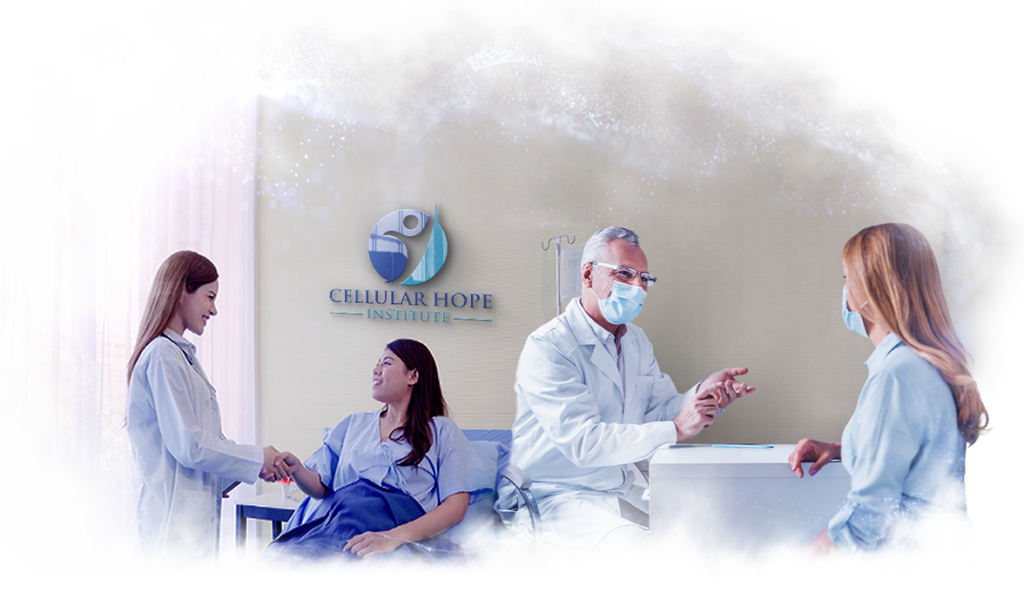
Our Team Will Assist You With:
- Scheduling your treatment dates
- Booking flights
- Hotel reservations (many hotels are a short walk from the hospital)
- Organizing transport during your stay in Cancun, including airport transfers
- Accompanying you to and from the hospital and answering any questions along the way
Our hospital is located in the center of Cancun, in an area known as ‘Stem Cell Circle,’ famous for its clinics and hospitals specializing in regenerative medicine research and treatment.
Our Commitment
We are dedicated to inspiring hope and improving our patients’ well-being by offering effective treatment with careful screening and a professional atmosphere where the patient’s health and happiness are paramount. Our mission is to provide the best possible experience through our committed staff, from patient outreach and coordination to your operating physician. We aim to alleviate your condition using the latest technology and quality care because our patients are our top priority.
Contact Us
Get to know the list of conditions that can be treated at our center by visiting the link below:
Additionally, you can contact us directly through the following email address:
info@cellularhopeinstitute.com
- Published in Blog
ISSCA Opening of Uccle, Belgium Center with GCell & Stem Cell Training
After several months of organizing and developing a location, the Global Stem Cells Group has finalized the construction of a laboratory and regenerative medicine research center in Uccle, Belgium.
This facility serves both as a regenerative medicine treatment and research center, but also as a plastic surgery clinic. In addition to this, one of the primary goals of the Center is to serve as a place for the fostering of knowledge and experience regarding the different products and equipment required for the application of cellular therapies. As part of the inaugural ceremony a group of physicians were trained in the setup and use of the various regenerative medicine protocols and application process of these cells into the patients.
This center is a push into Europe for the Global Stem Cells Group. As the science advances, newer and more advanced therapies and technologies are being developed and released into the market with each passing month.
With the European Union being one of the largest consumer markets in the world, the finalization of a brick-and-mortar location in Brussels, Belgium is one that will mean great things for the Global Stem Cells Group, and the presence and proliferation of regenerative medicine throughout Europe and the world.
“This was a wonderful opportunity that we could have. It goes to show that even during this pandemic, the medical community is one that is still going strong. We’re still rallying together to look for new breakthroughs, and come up with the most beneficial treatment options for patients,” Said Benito Novas, founder of the International Society for Stem Cell Applications, “In addition to this, it also provides an excellent platform for the distribution of regenerative medicine therapies and equipment, including the revolutionary new GCell Machine,”
Indeed, the inaugural training at the Stem Cell Center in Uccle, Belgium was one that covered both of the more traditional methods of stem cell isolation and application– adipose and bone-marrow derived autologous cells, but this training was also one of the first in which the company had the ability to demonstrate the novel GCell Machine. Using a precise system of blades and filters, it is able to process a stem cell sample from adipose tissue in less than half of the time that it would take a physician to do so through traditional means.
This allows the patient to be more comfortable throughout the shorter procedure, as less anesthesia is also required than when operating under traditional means. The GCell is a minimally invasive, portable machine that allows physicians to fully unlock the potential of regenerative medicine as a component in their practice. Using their global network of distributors and licensed vendors, Global Stem Cells Group is working fervently to ensure no interruption in the global availability of the most cutting-edge regenerative medicine products.
- Published in News
How Cellgenic MSCs Revolutionize Regenerative Medicine
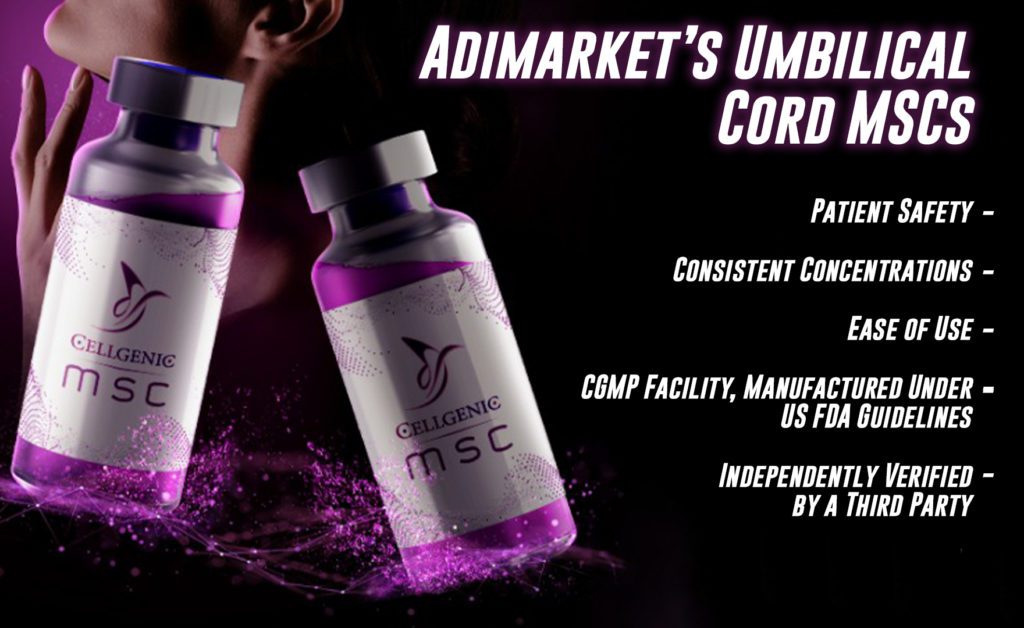
Stem Cells are revolutionizing the field of regenerative medicine, due to their intelligence. Once administered into the patient, they are able to identify and target areas of disease and damage. Adimarket’s Mesenchymal Stem Cell Product excretes growth factors, cytokines, and proteins, which all play a key role in the regeneration of tissue. Their anti-inflammatory and immunomodulatory properties mean that it is difficult for them to be rejected by the body. Additionally, they increase blood flow to the vital organs which need it the most.
Many proprietors of MSC products will claim that it is not necessarily important to have a high ratio of viable cells. They claim that it does not matter how many cells are ‘not viable’, or dead, so long as there is a high enough number of viable cells– however, current research has shown that this is not the case. These dead cells are detectable by the immune system, and it is believed that they can create an inflammatory response within the body at the treatment area, which would lower the effectiveness of the regenerative medicine treatments.
This bending of the science is harmful to our industry, which is why knowledgeable purveyors put one thing above all else– consistency. Our cellular concentrations are the same throughout each batch, and we make sure that there is a high ratio of viable cells. All of our samples are independently verified by a third party laboratory, and have been selected for their phenotypic and genotypic profile, characterized for optimum growth and stability. When the proper care is taken, Mesenchymal Stem Cell products have been identified as having the highest output of growth factors and stem cell factors among the current standards of care– as well as properties of angiogenesis, immunomodulation, and the potential for endogenous repair.
Cellgenic has been working for over a decade, constantly reinventing itself and reinforcing the products that we offer with the latest advancements in the field of regenerative medicine. We take every painstaking measure possible to ensure that the cellular samples that our customers use to treat their patients are second to none– this includes the consistent concentrations of our sample, which are the same throughout ensuring that every patient gets the same treatment. We offer the product in 10 million or 30 million live total nucleated cells, where other fabricators would have the same number of total cells. We ensure that every single product that we send out has been tested for low amounts of annexin, which is a cellular protein which serves as a marker for cell death.
All our Mesenchymal Stem Cell products come in 1cc vials cryogenically preserved– they are shipped overnight within the United States, conveniently delivered to your door in the morning. For use, the product is passively thawed between the palms of your hands– and ready to use when your patients are. MSC 10 contains 10 million live cells and is recommended for a single joint, or a small area. However, the MSC pure pro has 30 million live cells,and can be used for larger applications, or for up to three joints in the same patient at the same time.
If you are interested in finding out more about Cellgenic MSCs, you can send an eMail to info@stemcellsgroup.com
- Published in News


